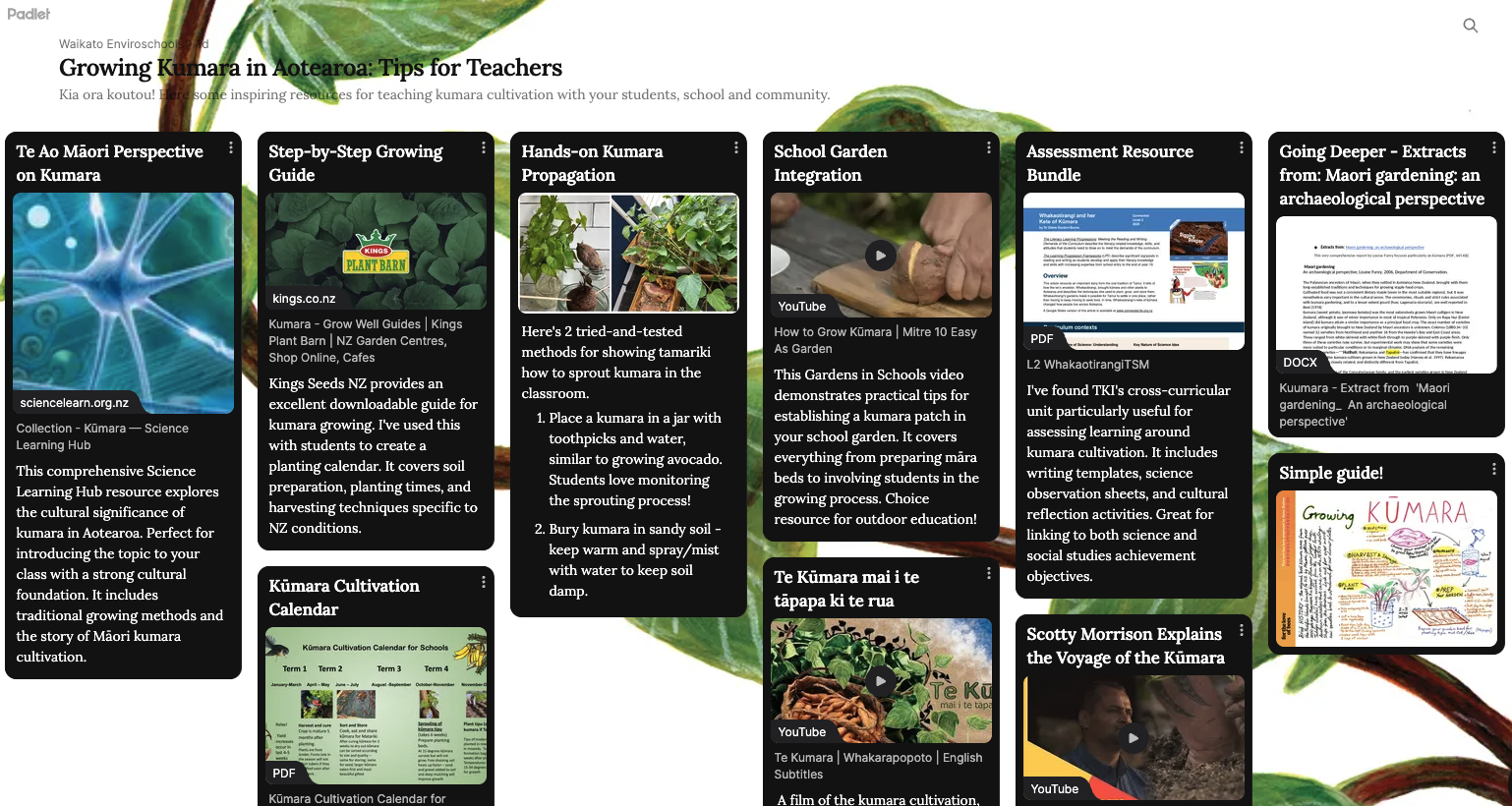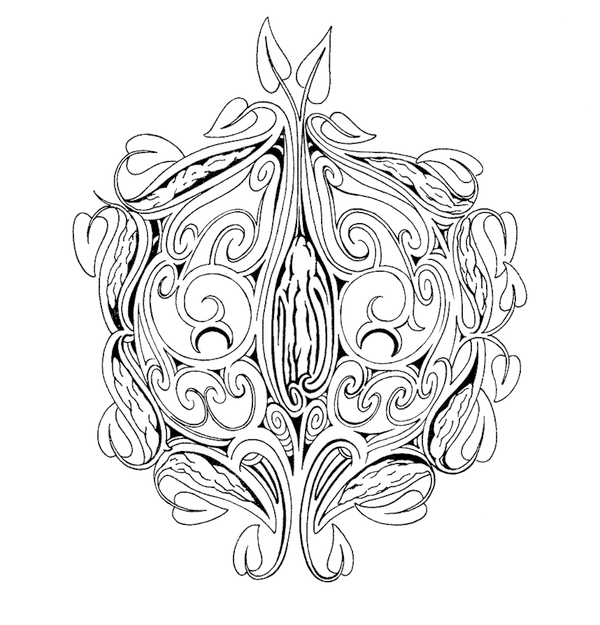
A growing interest in food gardens within schools, with a particular focus on kūmara, led the Waikato Enviroschools team to explore a way to grow learning and knowledge within the community to increase confidence, action and participation.
In Hamilton/Kirikiriroa, a series of Kūmara Wānanga were developed to strengthen connections between schools, communities, and the cultural and historical significance of kūmara cultivation. Teachers from various schools participated in a three-part series of workshops, designed to deepen their understanding of traditional growing practices, kaupapa and tikanga, while also encouraging practical skills in the māra kai.

Gathering for Wānanga 1 at the Hamilton Gardens
Wānanga 1: History, Stories, and Tikanga of Kūmara
The wānanga series began in September 2024, at Te Parapara Garden at the Hamilton Gardens, with an inspiring session led by guest speaker and respected kaumātua, Wiremu Puke, who shared rich narratives about the history of kūmara cultivation in Kirikiriroa. Wiremu discussed the traditional methods used by tūpuna (ancestors) to grow and care for kūmara, as well as the cultural significance of this taonga (treasured crop) in Waikato. Tikanga relating to planting and harvesting were shared and Wiremu referenced the borrow pits along the Waikato awa that were used as a source of sand and gravel to take to nearby māra to increase warmth in the soil for growing this traditionally tropical crop.
Wiremu Puke explained “the free-draining alluvial river soils of the natural terraces along the Waikato River – the kirikiri that gave Kirikiriroa its name – provided ideal growing conditions”.
Teachers were encouraged to start growing their own kūmara tipu (seedlings) during this time, to be nurtured and later planted once the weather was warm enough. Taputini, an ancient heritage variety, was also shared to be used aa a seed kūmara. This first session set a strong cultural and historical foundation for the hands-on learning that would follow.
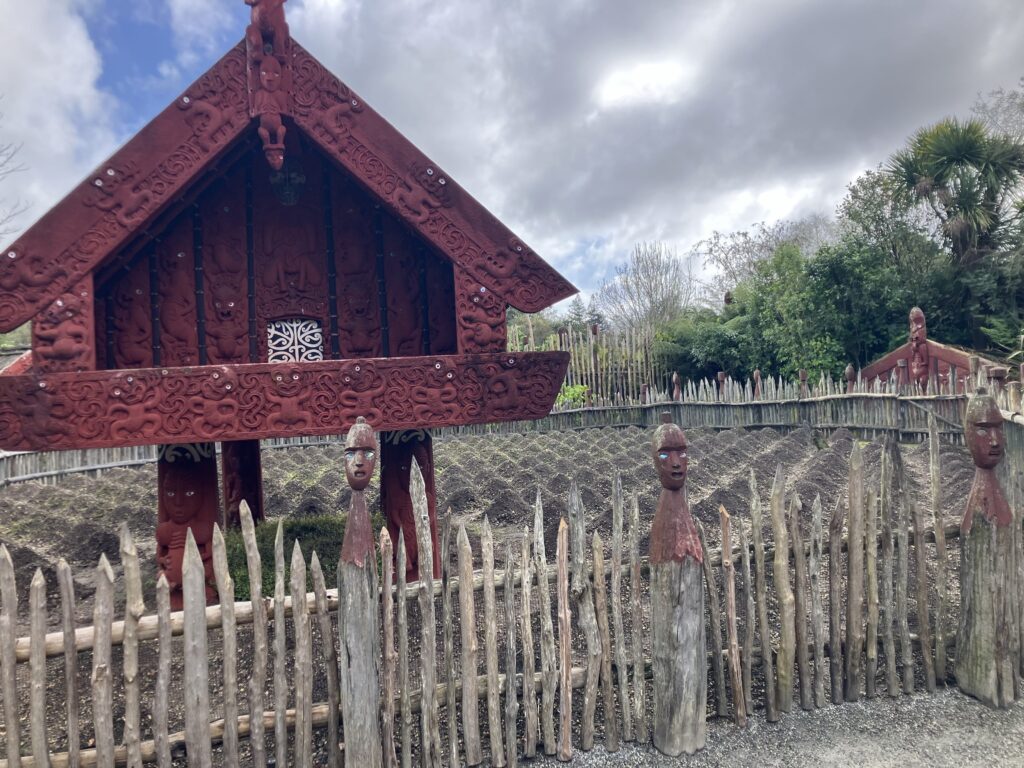
Te Parapara Garden at the Hamilton Gardens
Wānanga 2: Community Māra Planting Days
The second stage of the programme involved hands-on planting workshops in November 2024 at two different community gardens in Hamilton – The Fairfield Project community gardens and Gudex Court Māra Kai. These workshops offered teachers a practical opportunity to apply what they had learned, as they prepared the soil, planted kūmara tipu, and practiced techniques passed down through generations. Taputini, an ancient cultivar, were planted in mounds due to the way they grow, while Owairaka Red and Beauregarde tipu (commercially grown varieties) were planted in a ‘J’ shape to encourage growth.
By participating in these planting days, teachers were able to gain confidence in leading their own planting projects at their schools. The ‘hive’ mind was truly at work with the communal spirit of working alongside each other providing rich knowledge sharing – growing collective learning, connecting with each other in a supportive contextual space.

Planting kūmara tipu
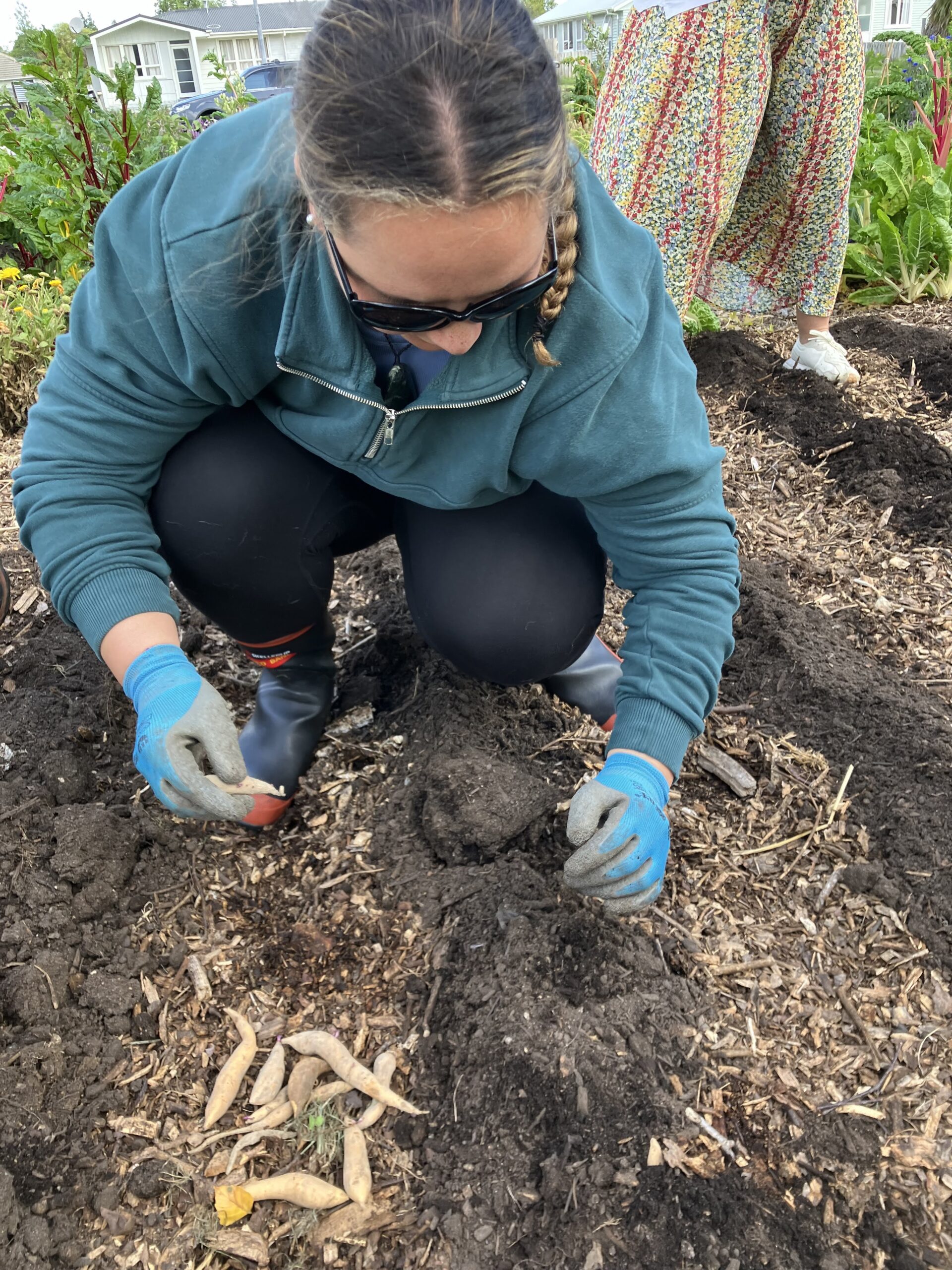
Preparing the soil for planting
Wānanga 3: Harvest
The final workshop was held in April 2025, and focused on the harvest phase of the kūmara growing cycle. Teachers learned how to carefully lift the kūmara from the soil, and discussion was had on how to prepare the tubers for storage to ensure they remain in good condition. Kūmara needs to have time to dry, or cure, before storage to avoid spoiling.
Traditional practices and tikanga around harvesting were also shared, highlighting the importance of respect and gratitude for the kai produced. When sorting kūmara a number are set aside as ‘seed’ for planting the following season, and particularly large or beautiful kūmara are used as koha/gifts. The harvest wānanga was held at The Gudex Māra Kai – a community garden looked after by students from Te Au o Tamatea St Andrews Middle School. Students took part in the harvest and the sorting, choosing which kūmara would be set aside for Matariki celebrations and which would be set aside for the community pātaka kai.
This concluding workshop celebrated the efforts of the participants while reinforcing the full cycle of kūmara cultivation — from planting to harvest — and how this process can be incorporated into school and community projects.
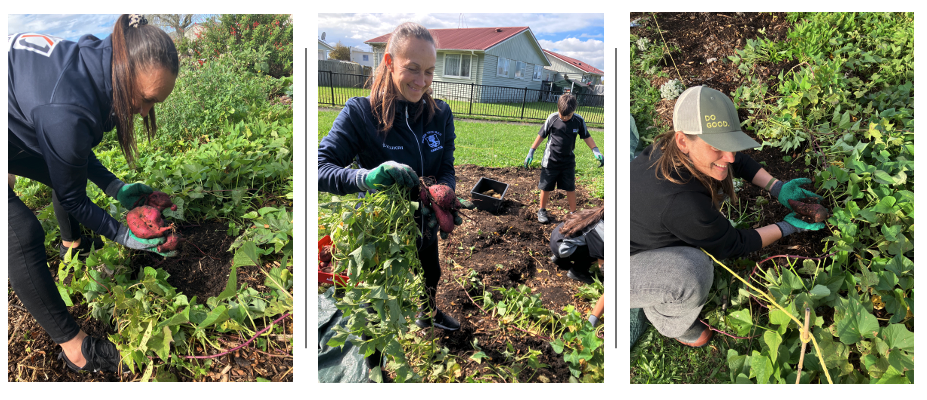
Wānanga 3 – kūmara harvest
Reflection
The Kūmara Wānanga empowered teachers to take these lessons back to their schools, integrating kūmara cultivation into their teaching practices. This initiative not only provided practical gardening skills but also connected educators and their students with the cultural narratives and values of mana whenua. Teachers reported feeling more confident in engaging with kaupapa Māori practices, and several schools have since started their own kūmara gardens with the support of their local communities.
Te Ao Māori enriches the journey
Beginning with a session led by kaumātua Wiremu Puke provided valuable cultural and historical context, which helped teachers approach kūmara cultivation with deeper respect and understanding. One school incorporated learning the whakapapa of Ranginui and Papatūānuku as part of the kūmara growing process – students were supported to learn karakia, and mihi to appropriate atua connected to the māra.
Practical, Hands-On Learning Increases Confidence
Teachers benefited significantly from working in the soil and learning techniques first-hand.
Seasonal Planning is Key
Aligning workshops with the natural growing and harvesting cycle of kūmara was vital for success.
Local Community Collaboration Strengthens Outcomes
Hosting planting days at community gardens helped build connections between teachers, local organisations, and community members. Partnerships with local gardens or marae can offer ongoing support and shared resources, and shares knowledge specific to the area.
Long-Term Projects Create Deeper Learning
Teachers suggested that the full cycle — from planting to harvesting — allowed for continuous engagement with students and whānau over several months. Other schools could replicate this model by planning year-long garden projects that integrate cultural learning. Celebrations can be included (eg Matariki) and exploring maramataka (Māori calendar) will deepen the journey.
Our Waikato Enviroschools team Kūmara Padlet is here
